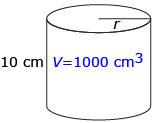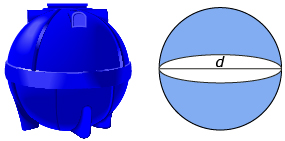Lesson 4
Completion requirements
Created by IMSreader
1. Lesson 4
1.7. Explore 3
Module 7: Volume and Capacity
To review another example of finding the volume of composite figures, turn to pages 154 to 155 of MathWorks 11 and read through “Example 4.” As you read through this example, think about the following questions:
- What three-dimensional objects make up the composite figure?
- How does the volume of a hemisphere relate to the volume of a sphere?
Self-Check 1
![]()
- Turn to page 156 of MathWorks 11. Answer question 1 of “Build Your Skills.”
Answer
- Turn to page 160 of MathWorks 11. Answer question 3 of “Practise Your New Skills.” Answer
- Turn to page 162 of MathWorks 11. Answer question 9.a. Answer
Example
A number of practical problems involve determining an unknown dimension, such as height or radius, when the volume or capacity and the other dimensions are known. Work through The Radius of a Sphere. In this example the volume of a sphere is known but the radius is not. Notice how the formula for the volume of a sphere is rearranged to isolate and solve for the radius.
Self-Check 2
- What is the radius of a cylindrical container 10 cm high and 1000 cm3 in volume?

Answer
- A pyramid is 200 in3 in volume. The area of its base is 100 in2. What is the pyramid’s height? Answer
- An underground spherical water tank has a capacity of 2000 L. What is the interior diameter, in metres, of the tank? Round to two decimal places.

Answer
It is now time to add new math terms to Mathematics 20-3: Glossary Terms.
In this lesson the new terms you will add are
- composite figure
- hemisphere
